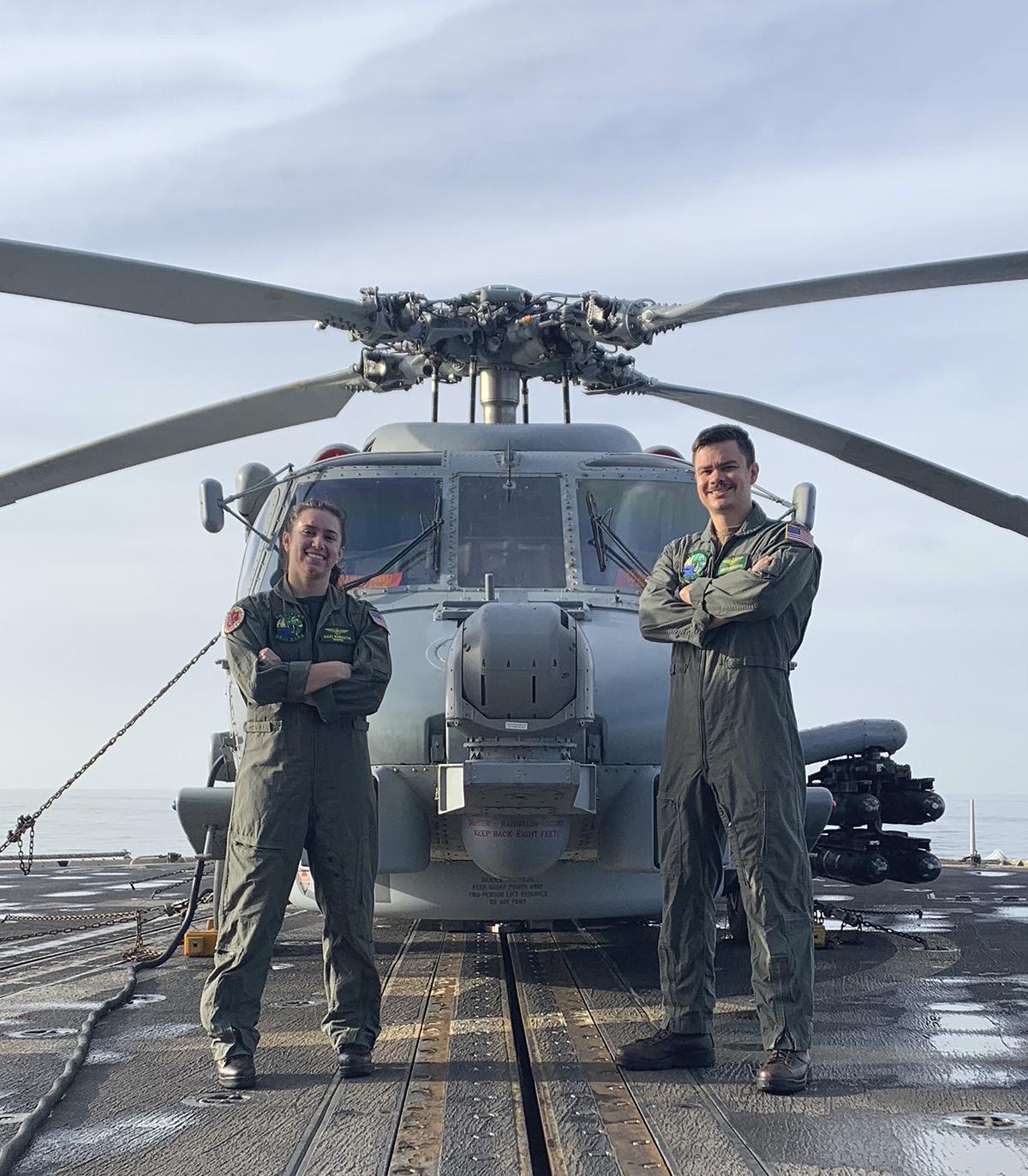On Leadership "On Leadership” is a feature column where Rotary Wing Flag Officers are able to submit articles on leadership topics of their choosing.
Let Go of the Good Old Days! The Time is Now
By RADM Shoshana S. Chatfield, USN, President, Naval War College
A
t the time when I entered the service, our country was going through an era where the global security environment was characterized by a bi-polar balance of power. The USSR was our known adversary, and during that Cold War, our Navy and Joint Force had developed mature tactics against that adversary. The investments to defeat that adversary had already been made, and the agreements to prevent escalation and to inform our conduct at sea and in the air had already been developed and tested. The collapse of the USSR brought with it a feeling that a peace dividend would yield incredible economic and technical growth. The next two decades would be transitional in many ways for our country, and as a young aviator, I had a front-row seat to observe and learn what could be achieved when technical evolution is met with determination and innovation during an era of cooperative security. Helicopter Combat Support was where I developed the awareness, habits, and skills that would carry me through a 34-year career. There I became aware that small teams, collaboration, and standardization were the bedrock of our naval helicopter community. I also observed that when properly enabled and implemented, these building blocks set a foundation for me to continue to evolve as a naval officer. I came of age during the last days of pure Vertical Replenishment deployments and an active Combat Logistics Fleet that supported our strike groups. Looking back, I now realize that I had arrived at the end of the good old days. The small HC Detachments that deployed together over the horizon on fat ships introduced me to the power of small teams with high trust shared between their members. There was no denying that our group success depended on both individual contributions of Sailors and the total commitment of the entire group to mission success. I saw the amazing accomplishments that were possible when Sailors took ownership of their mission outcomes. It wasn’t unusual to see the Detachment petty officer in charge of maintenance administration, for example, cleaning the windscreen of the helicopter before launch or to notice that people were competing to find a spot near the ramp to help push the folded H-46 into the hangar at the end of flight operations. The most successful detachments also understood that mission success depended on the integration of teams of teams—cohesiveness to engender high trust within the smaller team and connective tissue and shared purpose to enhance the overall capability of the larger team. My next tour expanded my understanding of crosscommunity collaboration and integration. In the ‘90’s, the community was investing in its nascent tactics program. Rotor Review #153 Summer '21
Our community was racing to be able to provide aided search and rescue support to Amphibious Ready Groups where the Marines were already using technology we did not have. And that was where our new capability would be delivered first. The few who were chosen were introduced to Night Vision Devices through training programs sponsored by the Marine Corps. The incompatible cockpit and the extra work to install a light kit, the rolls of speed tape used to patch light leaks and learning to place a counterweight on the helmet to relieve neck strain were just some of the innovative solutions our crews utilized as we raced to catch up. I was able to see firsthand how challenges that go hand-in-hand with the introduction of new technology and implementation of new programs can be solved with the right partnerships. Since my first days in primary training, through my first flying tours, subsequent department head tour, and onward, standardization has been the constant over my career that has allowed me to prep, brief, and fly in an array of mission sets, all while maximizing the effectiveness and safety of our crew. Strong standardization programs that refine and assess repeatable processes have protected my crewmembers and me for decades, and I am grateful for having internalized that habit. I still look for systemic root causes—breakdowns in standardization—when I encounter challenges in any unit’s business practices. Now, at the Naval War College, this practice provides a solid framework for my team to coordinate, direct, and manage large amounts of information and workflow and fits nicely into the academic realm where rigor in scholarly work depends on validity and reliability in research methodology.
20









































